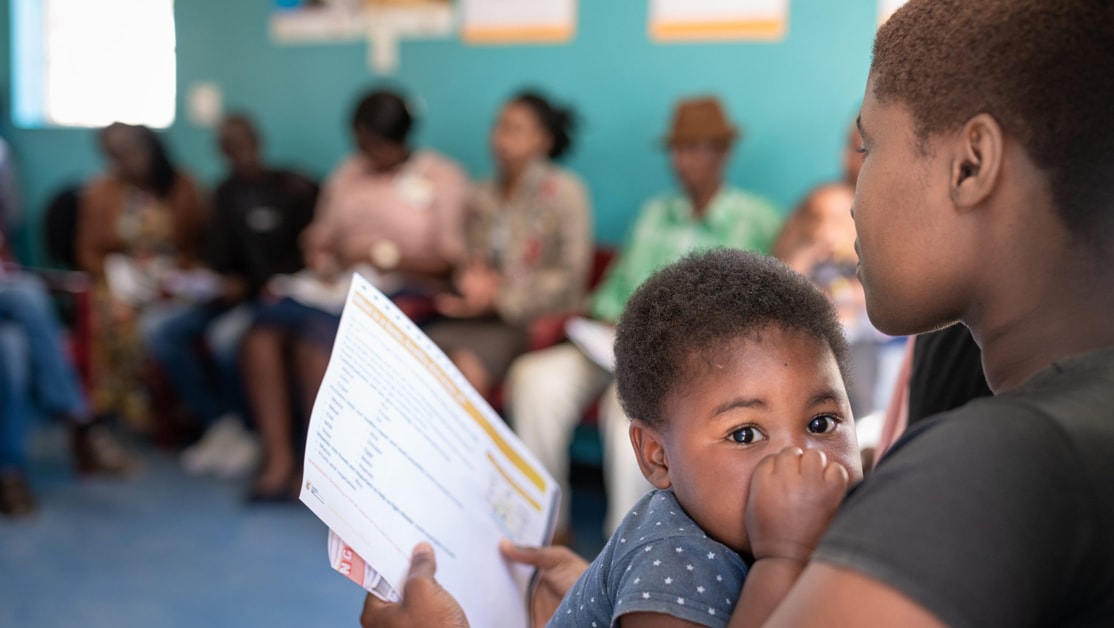At a glance
CDC, as a key implementer of the U.S. President’s Emergency Plan for AIDS Relief (PEPFAR), is a leader in the prevention, care, and treatment of maternal and pediatric HIV and TB disease.
Overview

Globally, in 2023, an estimated 120,000 new HIV infections occurred in children aged 0-14 years. Mother-to-child transmission, also known as vertical transmission, of HIV occurs when the virus passes to the baby during pregnancy, delivery, or through breastfeeding. For a woman living with HIV, there is little risk of transmission when antiretroviral treatment (ART) is taken and effective.
Preventing HIV in infants
Through PEPFAR, CDC supports a comprehensive package of prevention services during pregnancy, labor, and delivery. Since the program began, more than 5.5 million babies have been born HIV-free to mothers living with HIV. Services continue for the mother and infant until the infant's HIV status is known.
Advancing testing, care, and treatment
Early infant diagnosis
Early infant diagnosis programs test infants exposed to HIV before two months of age to identify and link infants living with HIV to lifesaving ART. At the same time, infants who test HIV-negative are provided preventive care and retested at nine and 18 months.
Pediatric testing and treatment
Globally, 1.37 million children are living with HIV. Without testing and treatment, half of these children will die by the age of two, and 80 percent will not live to their fifth birthday.
The number of children receiving ART also lags behind adults. In 2023, only 57 percent of children living with HIV received treatment, compared to 77 percent of adults.
While progress has been made, efforts must continue to find undiagnosed children and connect them to the best treatment options available.
Orphans and vulnerable children
CDC, through PEPFAR, supports orphans and vulnerable children (OVC) programs for those impacted by HIV. Children and adolescents living with HIV, who have lost one or both parents to AIDS, and those at high risk of HIV infection are program priorities. Program goals include:
- Providing access to HIV testing, care, and treatment for children and adolescents.
- Preventing HIV and sexual violence through evidence-based interventions.
- Supporting educational access and completion.
- Building resilience for HIV-impacted children, adolescents, and their families.
Improving women's health
Women living with HIV are six times more likely to develop cervical cancer. CDC and PEPFAR support cervical cancer screening and prevention for women living with HIV.
Additionally, some types of cervical cancer can be prevented with the highly effective vaccine for human papillomavirus (HPV) - an infection that causes cervical cancer. CDC collaborates with in-country immunization programs and other partners to support HPV vaccination efforts.
